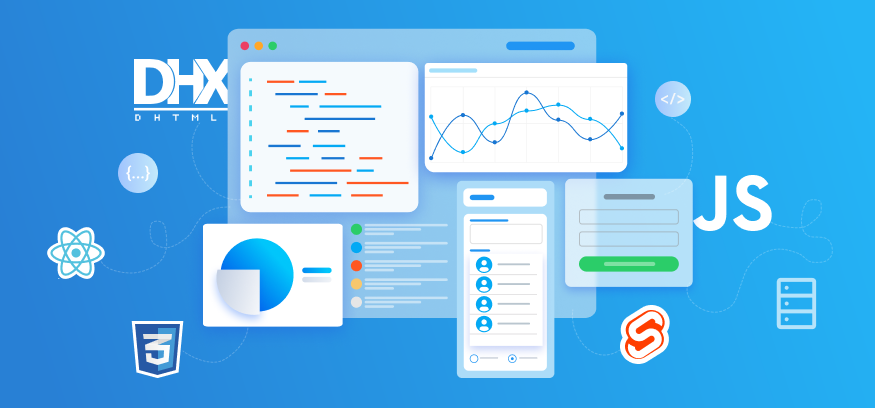JavaScript in the Modern Web: Trends, Tools, and Techniques
JavaScript, once known primarily as a language for adding interactivity to web pages, has evolved into a versatile tool that powers the dynamic and interactive experiences we encounter on the modern web. In this article, we’ll explore the latest trends, tools, and techniques that are shaping the role of JavaScript in today’s web development landscape.
The Rise of JavaScript: A Cornerstone of Web Development
JavaScript’s journey from a simple scripting language to a cornerstone of web development has been nothing short of remarkable. With its ability to run on both the client and server sides, JavaScript has become indispensable for building responsive and feature-rich web applications. Its versatility, coupled with the vibrant ecosystem of libraries, frameworks, and tools, has made it the go-to language for frontend and increasingly backend development. Beginners often find their footing with JavaScript through resources like “javascript tutorial for beginners,” which offer a structured approach to learning the language’s fundamentals and applications.
Trends Shaping JavaScript Development
Single Page Applications (SPAs): SPAs, powered by frameworks like React, Angular, and Vue.js, have gained widespread adoption. These frameworks offer a seamless user experience by loading content dynamically, eliminating page refreshes, and providing smooth transitions between views.
Progressive Web Apps (PWAs): PWAs leverage JavaScript to deliver app-like experiences directly through the web browser. They offer features such as offline support, push notifications, and installation prompts, blurring the line between web and native mobile applications.
Serverless Architecture: JavaScript’s lightweight nature makes it well-suited for serverless computing, where applications run in stateless containers and scale dynamically in response to demand. Platforms like AWS Lambda and Azure Functions allow developers to build and deploy serverless applications with ease, using JavaScript for backend logic.
Micro-frontends: Micro-frontends, inspired by the microservices architecture, involve breaking down frontend monoliths into smaller, independently deployable units. JavaScript’s modular ecosystem and component-based frameworks facilitate the development and maintenance of micro-frontends, enabling teams to work efficiently on different parts of the application.
Essential JavaScript Tools and Libraries
Package Managers: Tools like npm (Node Package Manager) and Yarn simplify dependency management and package installation for JavaScript projects. They provide access to a vast repository of libraries and frameworks, streamlining the development process.
Build Tools: Build tools like Webpack, Parcel, and Rollup.js automate tasks such as bundling, minification, and transpilation, optimizing the performance and size of JavaScript applications. These tools also support features like code splitting and hot module replacement, enhancing developer productivity.
Testing Frameworks: Testing frameworks like Jest, Mocha, and Jasmine enable developers to write and execute unit, integration, and end-to-end tests for JavaScript code. They ensure code quality, reliability, and maintainability throughout the development lifecycle.
Code Editors and IDEs: Code editors and integrated development environments (IDEs) such as Visual Studio Code, Sublime Text, Atom, and Online JavaScript Editor provide powerful features for writing, debugging, and refactoring JavaScript code. They offer syntax highlighting, code completion, and extension support, enhancing developer productivity and code quality.
Best Practices and Techniques
Modular Development: Embrace modular development practices, such as using ES6 modules or CommonJS, to organize code into reusable and maintainable components. Modular architecture improves code readability, scalability, and testability, facilitating collaboration among team members.
Asynchronous Programming: Leverage asynchronous programming patterns, such as Promises, async/await, and event-driven architecture, to handle non-blocking operations efficiently. Asynchronous code ensures smooth user interactions and responsive web applications, enhancing the user experience.
Performance Optimization: Optimize JavaScript performance by minimizing bundle size, reducing render-blocking resources, and implementing lazy loading strategies. Techniques like code splitting, tree shaking, and caching improve page load times and enhance overall application performance.
Accessibility and SEO: Ensure accessibility and search engine optimization (SEO) by following web standards, providing semantic markup, and enhancing keyboard navigation and screen reader compatibility. Accessibility and SEO best practices improve usability and discoverability, making web applications more inclusive and visible to users.
Conclusion
JavaScript continues to play a pivotal role in shaping the modern web, driving innovation and enabling developers to build dynamic and engaging experiences. By staying updated on the latest trends, leveraging powerful tools and libraries, and adopting best practices and techniques, developers can harness the full potential of JavaScript to create high-quality, performant, and accessible web applications. As the web ecosystem evolves, JavaScript remains at the forefront, empowering developers to push the boundaries of what’s possible on the web.






